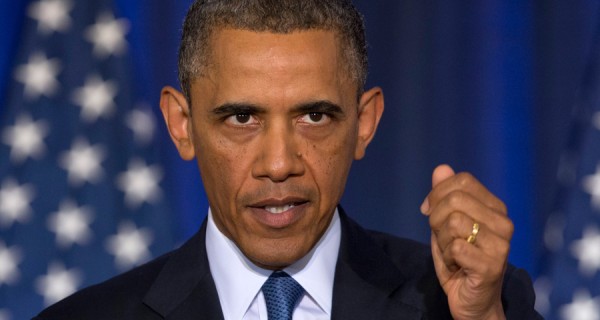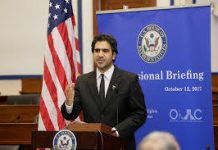Obama’s Policies to Empower ISIS Exposed
Raymond Ibrahim/May 22/15
For months, many Western observers have been closely following the minute-by-minute developments concerning the battle between Islamic State and coalition forces in the hopes that such data will help them discern what the future may hold. Yet knowledge of the end game has been available for anyone viewing the Obama administration with the eyes of a hedgehog, not a fox. In an article published over seven months ago, I anticipated the main developments to have taken place since U.S. President Obama declared war (i.e., “airstrikes”) on the Islamic State in September, 2014. Titled “Does Obama Need ‘Time to Defeat or Forget ISIS?” I made the following predictions, all of which have come true, and in the same sequence:
Obama’s “it will take time” [to defeat IS] assertion prompts the following prediction: U.S. airstrikes on IS targets will continue to be just enough to pacify those calling for action against the caliphate (“we’re doing what we can”). The official [U.S. government’s] narrative will be that the Islamic State is gradually being weakened, that victory is a matter of time (remember, “It will take time”)….
[W]e will hear about the occasional victory against IS—this or that leader killed or captured…Then, just as they “suddenly” appeared in Iraq, we will “suddenly” again hear—probably first from IS itself—that the Islamic State has made some major comeback, winning over some new piece of territory, as the caliphate continues to grow and get stronger.
Now consider how the Obama administration’s actions have fulfilled these predictions, and often in the same sequence. The official [U.S. government’s] narrative will be that the Islamic State is gradually being weakened, that victory is a matter of time…
Last February, key Obama administration figures—including Secretary of State John Kerry and retired General John Allen, the president’s special coordinator for the coalition against the Islamic State—triumphantly asserted that, thanks to U.S. airstrikes, “half the group’s [IS] leaders in Iraq had been killed.” Not long thereafter, an investigative report demonstrated that such claims were utterly false and hardly representative of reality.
[W]e will hear about the occasional victory against IS…
In April, the Pentagon announced that, thanks to U.S. airstrikes and the Iraqi army, “ISIL [Islamic State] is no longer the dominant force in roughly 25 to 30% of the populated areas of Iraqi territory where it once had complete freedom of movement.” The Pentagon even released a map showing which territories the Islamic State had lost.
Soon, however, it became evident that the Pentagon’s claim and map were misleading and incomplete. Among other irregularities, the map, while showing territories that IS once held and territories it had since lost, failed to indicate the new territories IS had gained since the coalition effort began—making the 25%-30% claim totally misleading.
[W]e will hear about … this or that leader killed or captured…
Nor was Obama administration grandstanding concerning the killing of “key” IS figures wanting. Most recently, on May 16, U.S. special forces managed to kill Abu Sayyaf. Although only a mid-ranking leader, Defense Secretary Ashton Carter said his killing “represents another significant blow to Isis.” (Read here for an idea of how many times U.S. officials have made the “significant blow” assertion whenever this or that jihadi dies, only for the jihad to spread and conquer more lands.)
Even the New York Times observed that “Abu Sayyaf is a midlevel leader in the organization — one terrorism analyst compared him to Al Capone’s accountant — and likely is replaceable in fairly short order.”Then, just as they “suddenly” appeared in Iraq, we will “suddenly” again hear—probably first from IS itself—that the Islamic State has made some major comeback, winning over some new piece of territory, as the caliphate continues to grow and get stronger.
Finally, after the Obama administration had claimed that it had killed half of IS leadership, that it had pushed IS out of 25%-30% previously held territory, that its killing of an IS midlevel leader was a “significant blow”—right on cue, the Islamic State just announced its takeover of Ramadi, the capital of Anbar, one of Iraq’s most strategic provinces. According to a May 17 Reuters report:
Islamic State militants said they had taken full control of the western Iraqi city of Ramadi on Sunday in the biggest defeat for the Baghdad government since last summer.
It was the biggest victory for Islamic State in Iraq since security forces and Shi’ite paramilitary groups began pushing the militants back last year, aided by air strikes from a U.S.-led coalition. The U.S. Defense Department, while not confirming the fall of Ramadi, sought to play down the impact on the broader Iraq military campaign of an Islamic State seizure of the city. To fully appreciate the significance of this latest conquest by the Islamic State, consider the words of Anbar governor Ahmed al-Dulaimi spoken back in November 2014: “If we lose Anbar, that means we will lose Iraq.”
Of course, none of these developments are surprising for those among us who were able to take a step back—to transcend the distracting noise and nonsense daily grinded out by mainstream media—and look at the big picture. For those able to read the plain writing on the wall, the end game between Obama and the Islamic State was always easy to discern.




















